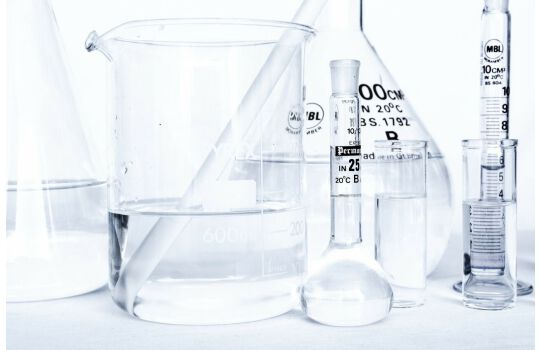Ethanedioic Acid, Dihydrate; Oxalic Acid Dihydrate
Kimyasal Formülü : C2H2O4
Ambalaj Şekli : 25 Kg Çuvallarda
Tanımı ve Kullanımı :
Okzalik asit esas olarak karbonhidratların veya glikozun vanadyum pentoksit varlığında nitrik asit veya hava kullanarak oksidasyonu ile üretilir. Glikolik asit ve etilen glikol dahil olmak üzere çeşitli öncüler kullanılabilir. Daha yeni bir yöntem oksalik asit diesterleri vermek üzere alkollerin oksidatif karbonilasyonunu gerektirir.
4 ROH + 4 CO + 02 → 2 (CO2R)Oxalic acid is an organic compound with the formula C2H2O4. It is a colorless crystalline solid that forms a colorless solution in water. Its condensed formula is HOOCCOOH, reflecting its classification as the simplest dicarboxylic acid.
Its acid strength is much greater than that of acetic acid. Oxalic acid is a reducing agent[7] and its conjugate base, known as oxalate (C
2O2−
4), is a chelating agent for metal cations. Typically, oxalic acid occurs as the dihydrate with the formula C2H2O4·2H2O.
It occurs naturally in many foods, but excessive ingestion of oxalic acid or prolonged skin contact can be dangerous.
Its name comes from the fact that early investigators isolated oxalic acid from wood-sorrel (Oxalis) flowering plants.
Contents
1 History
2 Preparation
2.1 Laboratory methods
3 Structure
4 Reactions
5 Occurrence
5.1 Biosynthesis
5.2 Occurrence in foods and plants
5.3 Other
6 Biochemistry
7 Applications
7.1 Cleaning
7.2 Extractive metallurgy
7.3 Niche uses
8 Content in food items
9 Toxicity of concentrated oxalic acid
10 References
11 External links
History
The preparation of salts of oxalic acid from plants had been known, at the latest, since 1745, when the Dutch botanist and physician Herman Boerhaave isolated a salt from sorrel.[8] By 1773, François Pierre Savary of Fribourg, Switzerland had isolated oxalic acid from its salt in sorrel.[9]
In 1776, Swedish chemists Carl Wilhelm Scheele and Torbern Olof Bergman[10] produced oxalic acid by reacting sugar with concentrated nitric acid; Scheele called the acid that resulted socker-syra or såcker-syra (sugar acid). By 1784, Scheele had shown that "sugar acid" and oxalic acid from natural sources were identical.[11]
In 1824, the German chemist Friedrich Wöhler obtained oxalic acid by reacting cyanogen with ammonia in aqueous solution.[12] This experiment may represent the first synthesis of a natural product.[13]
Preparation
Oxalic acid is mainly manufactured by the oxidation of carbohydrates or glucose using nitric acid or air in the presence of vanadium pentoxide. A variety of precursors can be used including glycolic acid and ethylene glycol.[14] A newer method entails oxidative carbonylation of alcohols to give the diesters of oxalic acid:
4 ROH + 4 CO + O2 → 2 (CO2R)2 + 2 H2O
These diesters are subsequently hydrolyzed to oxalic acid. Approximately 120,000 tonnes are produced annually.[13]
Historically oxalic acid was obtained exclusively by using caustics, such as sodium or potassium hydroxide, on sawdust.[15]
Laboratory methods
Although it can be readily purchased, oxalic acid can be prepared in the laboratory by oxidizing sucrose using nitric acid in the presence of a small amount of vanadium pentoxide as a catalyst.[16]
The hydrated solid can be dehydrated with heat or by azeotropic distillation.[17]
Developed in the Netherlands, an electrocatalysis by a copper complex helps reduce carbon dioxide to oxalic acid;[18] this conversion uses carbon dioxide as a feedstock to generate oxalic acid.
Structure
Anhydrous oxalic acid exists as two polymorphs; in one the hydrogen-bonding results in a chain-like structure whereas the hydrogen bonding pattern in the other form defines a sheet-like structure.[19] Because the anhydrous material is both acidic and hydrophilic (water seeking), it is used in esterifications.
Reactions
Oxalic acid is a relatively strong acid, despite being a carboxylic acid:
C2O4H2 ⇌ C2O4H− + H+ pKa = 1.27
C2O4H− ⇌ C
2O2−
4 + H+ pKa = 4.27
Oxalic acid undergoes many of the reactions characteristic of other carboxylic acids. It forms esters such as dimethyl oxalate (m.p. 52.5 to 53.5 °C (126.5 to 128.3 °F)).[20] It forms an acid chloride called oxalyl chloride.
Oxalate, the conjugate base of oxalic acid, is an excellent ligand for metal ions, e.g. the drug oxaliplatin.
Oxalic acid and oxalates can be oxidized by permanganate in an autocatalytic reaction.[21]


